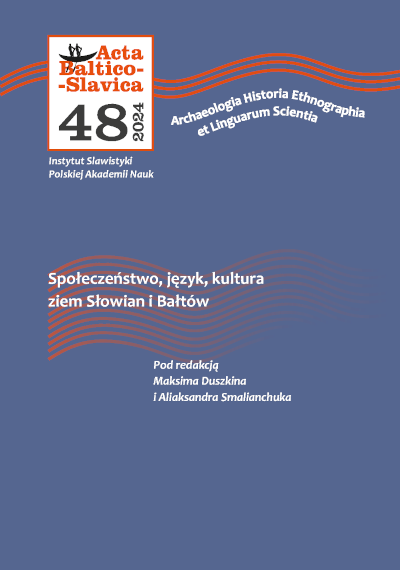The Unknown Face of Catholic-Protestant Dialogue
in Central Europe? The Forgotten Seventeenth-Century
Epitaph of the Swedish King Gustav II Adolf in the Collegiate
Church of the Holy Cross in Wrocław (Silesia)
The Unknown Face of Catholic-Protestant Dialogue
in Central Europe? The Forgotten Seventeenth-Century
Epitaph of the Swedish King Gustav II Adolf in the Collegiate
Church of the Holy Cross in Wrocław (Silesia)
Author(s): Bogusław Czechowicz, Alicja CimałaSubject(s): History of Church(es), Social history, 17th Century
Published by: Instytut Slawistyki Polskiej Akademii Nauk
Keywords: Gustav II Adolf; Wrocław; funeral culture; Baroque; Catholic-Lutheran dialogue;
Summary/Abstract: The article presents surprising information about the existence of an epitaph of KingGustav II Adolf of Sweden in the seventeenth century in the Collegiate Church ofthe Holy Cross in Wrocław (Silesia). The monument commemorating the pillar ofLutheranism in Europe in a Catholic shrine – a sort of “functional extension” of theCathedral of St John the Baptist – was undoubtedly unusual. Its existence is reportedin two independent sources from 1682 and 1694. It is not known who might havefunded the epitaph or when it was created; the period in question is fifty years fromthe king’s death in 1632. The content of the Latin inscription commemorating theking-wanderer, as he was referred to there, shows some affinity with the poetry of theSilesian Catholic poet Johannes Scheffler, known by the pseudonym Angelus Silesius(†1677). One of the circumstances favouring the creation of the epitaph may havebeen the period of Cardinal Frederick of Hesse’s service as Bishop of Wrocław (from1672) – in Rome, he had previously been a tutor to the famous convert, the formerSwedish queen Christina, Gustav Adolf ’s daughter. It is also not known when theking’s epitaph was removed. It could have happened as early as around 1710, whena new high altar was built in the church. It was interpreted as a reaction of theWrocław Catholic clergy to the Altranstädt Convention of 1707. That was when an-other Swedish king, Charles XII, spoke up for the Silesian Lutherans, thus becomingthe epitome of evil for the Catholic prelates.
Journal: Acta Baltico Slavica
- Issue Year: 2024
- Issue No: 48
- Page Range: 1-12
- Page Count: 12
- Language: English

